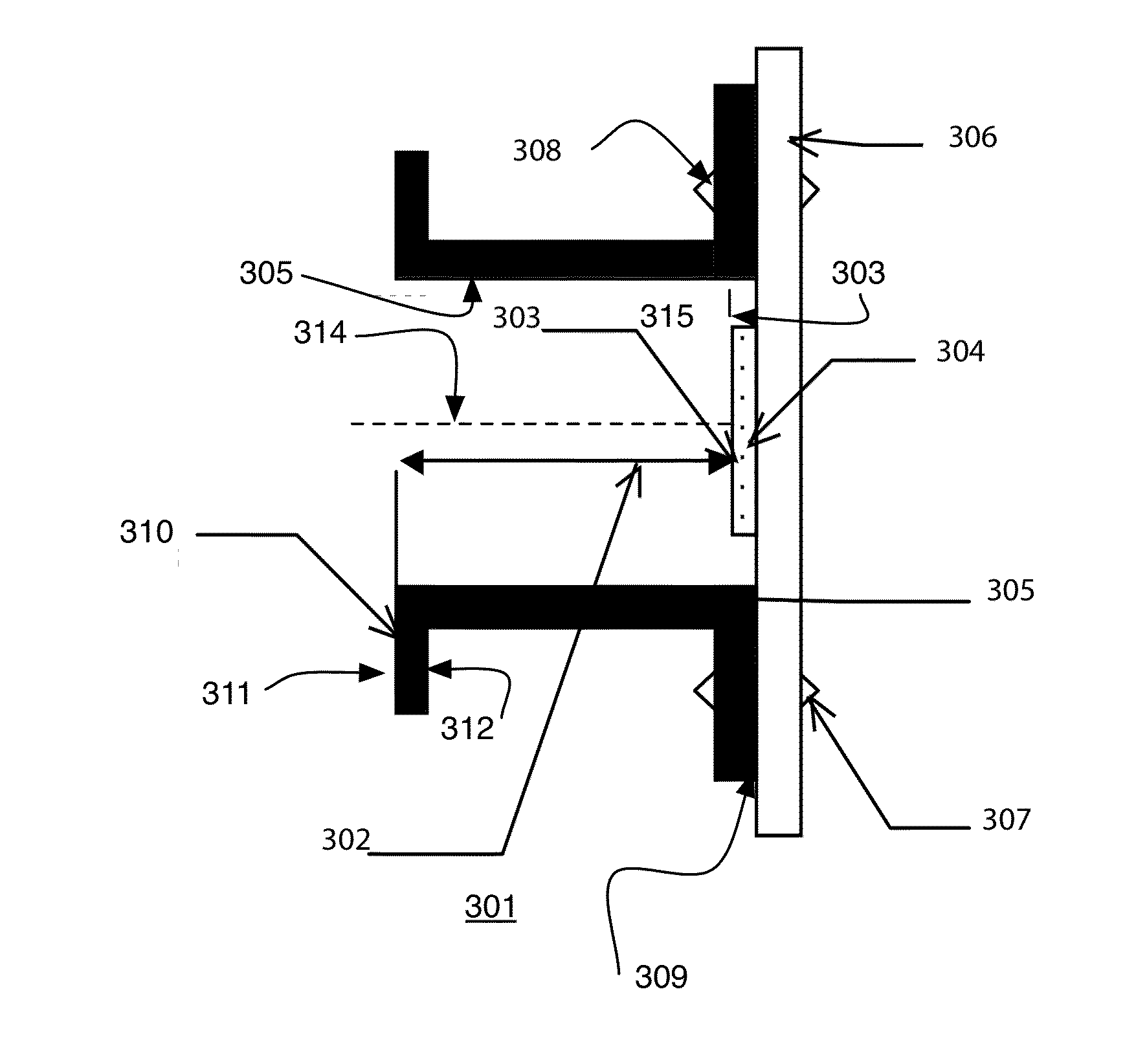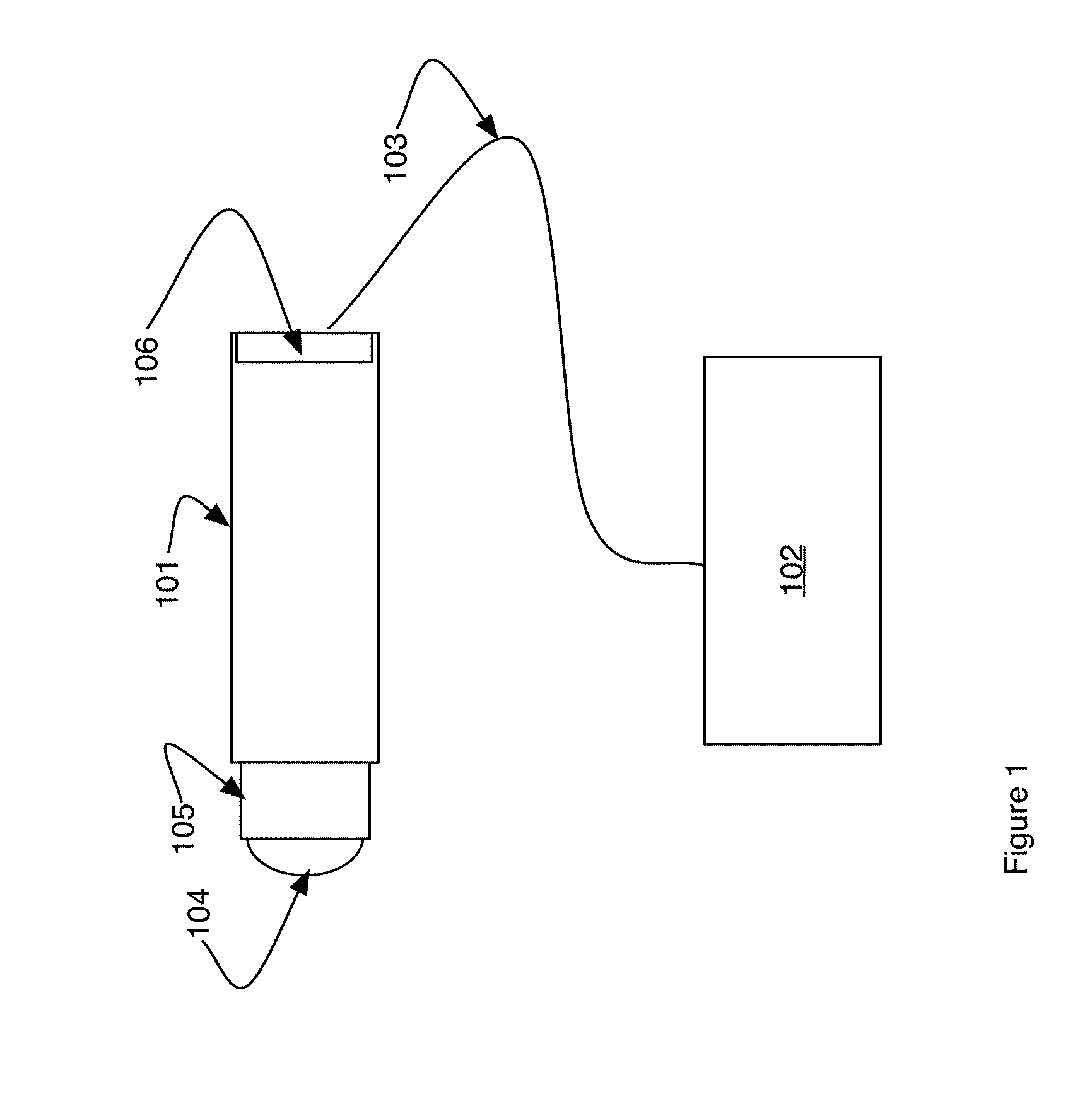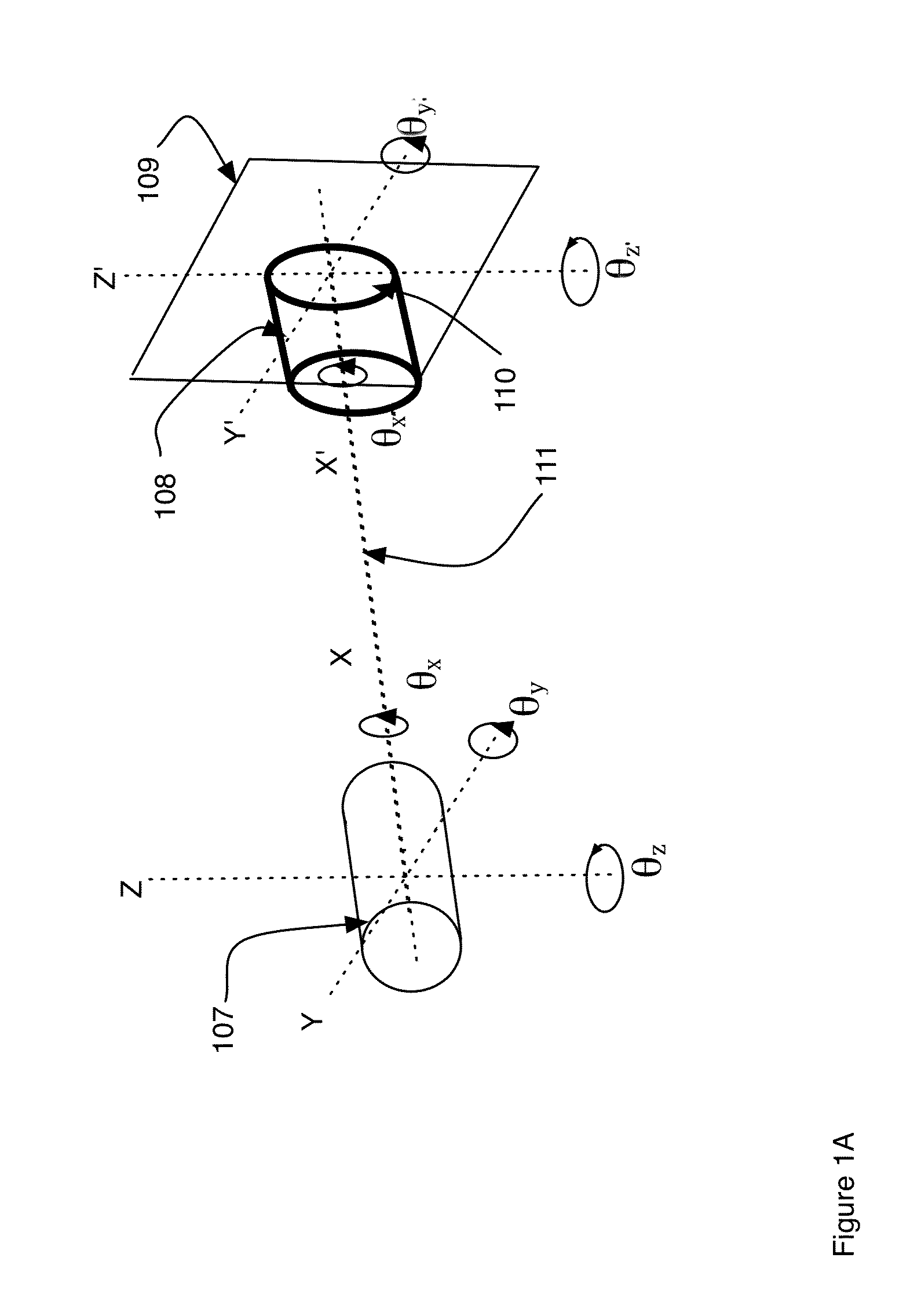Lens Mount
a technology of lens mounting and lens body, which is applied in the field of interchangeable lens mounting system, can solve the problems of not being able to quickly interchange lenses, and the current system is not designed for miniature lenses, etc., and achieve the effect of accurate definition of the distance between the lens and the image sensor
- Summary
- Abstract
- Description
- Claims
- Application Information
AI Technical Summary
Benefits of technology
Problems solved by technology
Method used
Image
Examples
Embodiment Construction
[0050]Referring to FIG. 1 an exemplary imaging system in which the present invention may be used is shown. A lens 104 is mounted in a lens body 105 that is then mounted in a lens holder 101. The lens holder is attached to an image sensor 106. The sensor is typically mounted on a printed circuit board that provides means for an electrical connection 103 to image processing electronics 102. In another embodiment, not shown, the electronics 102 are incorporated on the same circuit board as the image sensor 106 thereby providing a very compact design.
[0051]Preferred embodiments of the invention include two general components a lens body and a lens holder. The lens body is removable from the lens holder and may be interchanged with other lens bodies to provide a means for interchanging lenses. Lens bodies contain lens elements that are best used in differing imaging environments. For example one lens body may contain lens elements producing a wide-angle view and a second lens body may co...
PUM
 Login to View More
Login to View More Abstract
Description
Claims
Application Information
 Login to View More
Login to View More - R&D
- Intellectual Property
- Life Sciences
- Materials
- Tech Scout
- Unparalleled Data Quality
- Higher Quality Content
- 60% Fewer Hallucinations
Browse by: Latest US Patents, China's latest patents, Technical Efficacy Thesaurus, Application Domain, Technology Topic, Popular Technical Reports.
© 2025 PatSnap. All rights reserved.Legal|Privacy policy|Modern Slavery Act Transparency Statement|Sitemap|About US| Contact US: help@patsnap.com



